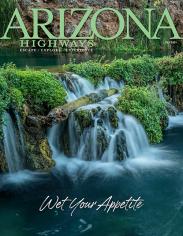Forest Road 300
Mogollon Rim, Coconino/Apache-Sitgreaves National Forests
The Mogollon Rim. That’s the biggest reason you’ll want to make this drive. Although there are different opinions on how to pronounce the name — Spanish scholars go with “mo-go-yawn,” locals use “muggy-on” — everyone agrees that “the Rim” is impressive.
